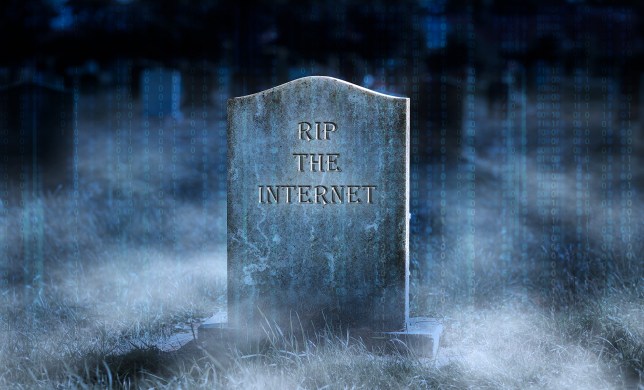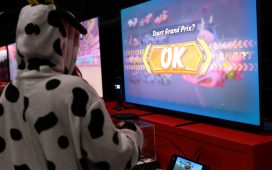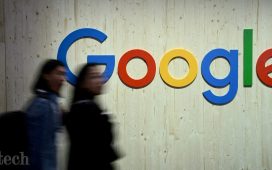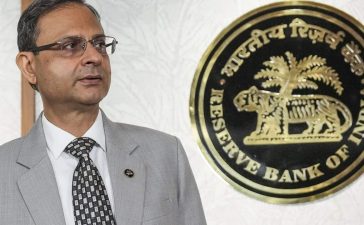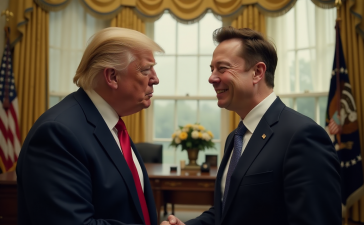‘The US government is engaging in an artificial intelligence-powered gaslighting of the entire world population.’
Those words are the basis of an online conspiracy theory gaining followers that, weirdly, might be coming true.
Well, not the government gaslighting part. That’s tinfoil hat territory.
But the ‘Dead Internet Theory’ which it went on to propose – the idea that online is just a sea of bots and AI-generated trash which we’re all unwittingly encouraging – doesn’t really feel beyond the realms of possibility today, especially since ChatGPT rocked up.
If you use social media, and most of us do, you may have noticed the death knell sounding – an increasing number of posts and pictures that are created by AI. Or perhaps you haven’t, which is even more scary, because it shows they’re increasingly difficult to spot.
Either way, it feels like the internet really is changing. And not for the better.
What is Dead Internet Theory?
Most attribute the origin of Dead Internet Theory to 4chan and Wizardchan.
Here, users argued that the entire internet was a government psyop – psychological operation – controlled by artificial intelligence, and that most content is generated by bots designed to power the consumer cycle.
From here, it was condensed into a full hypothesis by user IlluminatiPirate who in 2020 shared a long, convoluted post titled Dead Internet Theory: Most of the Internet is Fake.
Here, he argues that the internet died around 2016, and is now ‘empty and devoid of people’. Most of what we see is supposedly created using AI, spread by bots and, possibly, influencers paid by the powers that be to keep up the facade.
Well, it’s hard not to argue that more and more online content is AI-generated, whether it’s a photo of Donald Trump supposedly resisting arrest or a rat with frankly enormous genitals making its way into a genuine scientific paper.
However, ultimately there was still a human behind these, using AI either very well or very badly. People are turning to AI because it can often do a better, quicker job. What they’re attempting to accomplish with the output ranges from a quick translation to stoking civil unrest.
But on social media, AI-generated content is even more prevalent. Here, bots are not only spewing out AI-generated content, other bots are reacting to it, pushing it into our feeds more and more.
If you’ve seen shrimp Jesus, a rash of AI-generated spam flooding Facebook, then you know.
AI slime
This onslaught of garbage content is known as AI slime – and your social media feeds are covered in it.
Some platforms are trying to clear it up. Elon Musk, for instance, has a particular bee in his bonnet about bots, and is experimenting with charging new users if they want to post on X, formerly Twitter. Two birds and all that.
Others however are leaning into the slime, keen to whip up more.
TikTok is reportedly exploring the idea of its own virtual influencers, helping the app to hoover up some of the advertising dollars currently going into the pockets of human influencers. According to The Information, the feature would generate a script based on a prompt submitted by the advertiser, which in turn would become a video advert starring one of its AI influencers.
And TikTok isn’t alone.
Instagram is testing a feature that allows its most popular influencers to clone themselves, creating an AI-powered chatbot version who can interact with users so they don’t have to engage directly with the hoi polloi who make them money.
However, given an increasing number of interactions with commercial posts intended to sell stuff are actually from bots too, this ploy could end up biting advertisers on the butt.
What now for the internet?
Could it be that the golden days of the internet are almost over? It has been a rollercoaster. Once championed as a way to connect, or reconnect, people, it was the home of chat rooms and blogs, Friends Reunited and Myspace.
Then social media arrived, and quickly became seen as a dark force online by many, contributing to feelings of anxiety and exacerbating loneliness.
Now, ironically, there is concern that a lack of real human beings on social media will make it even more lonely.
Some argue this dilution could be a good thing, encouraging children away from their endless feeds and into real-life time with friends.
But like so many hopes for the internet, it might not quite deliver.
And while the US government isn’t behind the entire internet trying to control us (for believers, America isn’t actually the centre of the world), there’s no doubt it is driven by the consumer cycle. Advertising is king, and AI is only strengthening its grip on the kingdom.
A recent Europol report estimated that as much as 90% of online content may be synthetically generated by 2026.
As this wave of fake content rushes towards us, it will become ever more important to think before you click or buy.
A bot could well be playing you.
MORE : TikTok prankster found cowering behind a tree after ride-by e-bike phone theft
MORE : ‘Living Nostradamus’ issues chilling prediction about three days of darkness in 2024
MORE : Iraqi TikTok star killed outside her home ‘by gunman posing as delivery driver’
Get your need-to-know
latest news, feel-good stories, analysis and more
This site is protected by reCAPTCHA and the Google Privacy Policy and Terms of Service apply.

